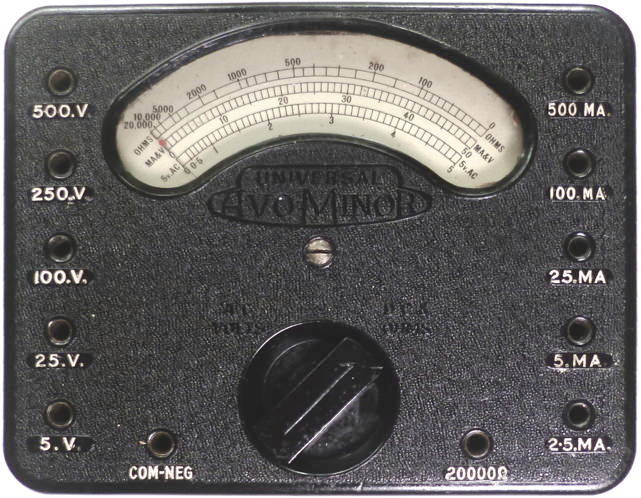
1935 model
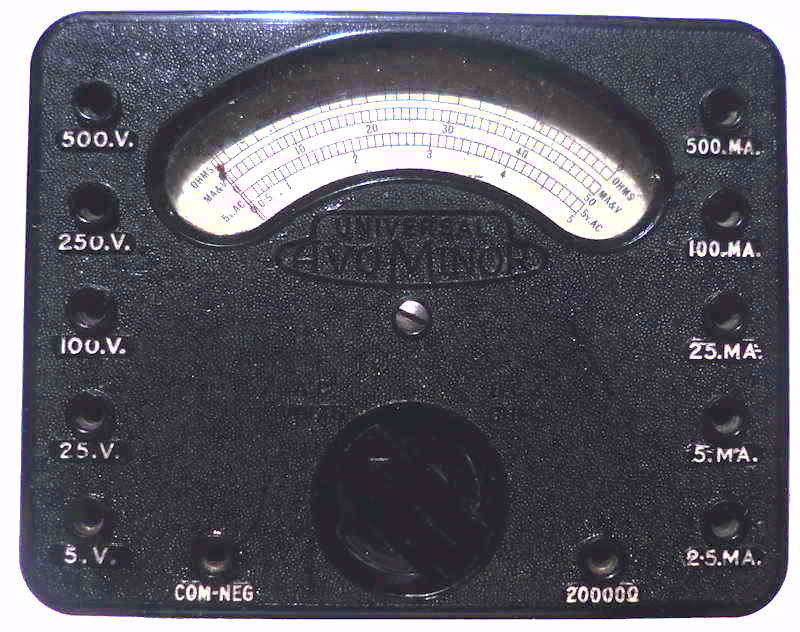
1945 model
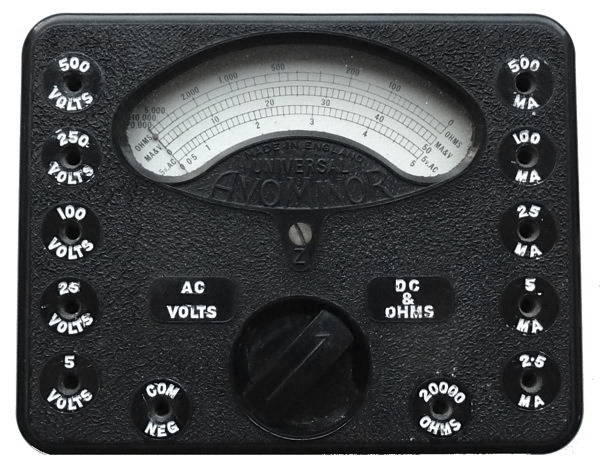
1952 model
serial numbers U22080-95, U86616-146,
U87619-246, U89664 546, U120596-652 and U76386-445
The original AVO Minor was a smaller version of the original AVO multimeter which started life back in 1923, and was a DC-only instrument The instruments shown here incorporate a copper oxide rectifier enabling AC measurements to be made. Though known for their Avometer general purpose multimeter's, AVO (or AWEECO as they were originally) made a wide range of test gear including valve testers, oscillators and light meters. You will find more information here about these instruments and other similar models. AVO also produced a range of the smaller multimeters such as those shown here which are described here.

1935 model

1945 model

1952 model
AVO Multiminor This meter which was first introduced in
1934 remained in production in this form for about 20 years. Mine were
made in 1935, 1946, 1945 and 1952
22 Ranges� DC 5, 25, 100, 250, 500 volts - sensitivity 2.5
DC 2.5, 5, 25, 100, 500 mA
AC 5, 25, 100, 250, 500 volts - sensitivity 2.5 mA
Non-linear scale for 5 volts
R 20k ohm (400 ohm center)
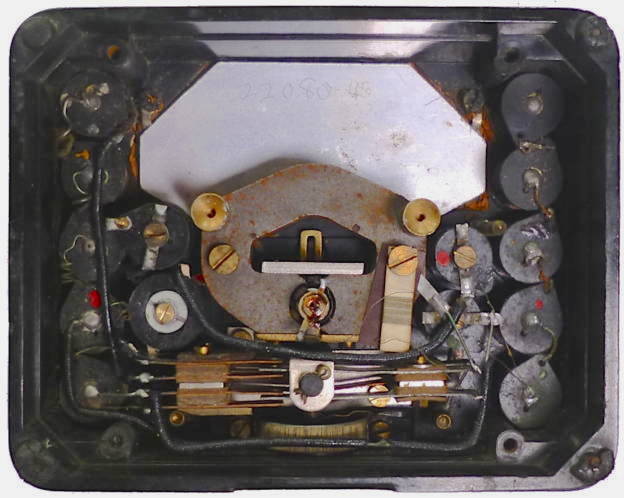
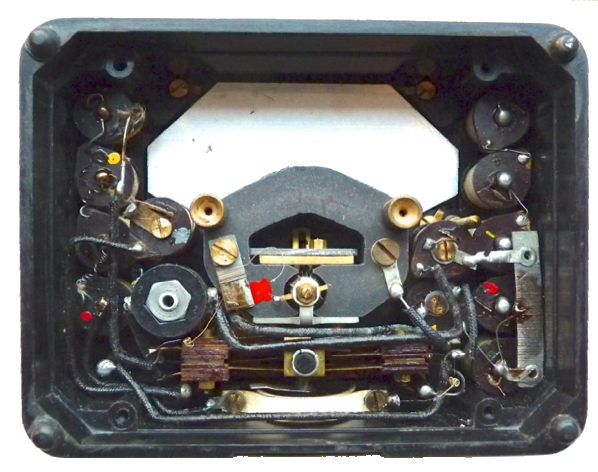
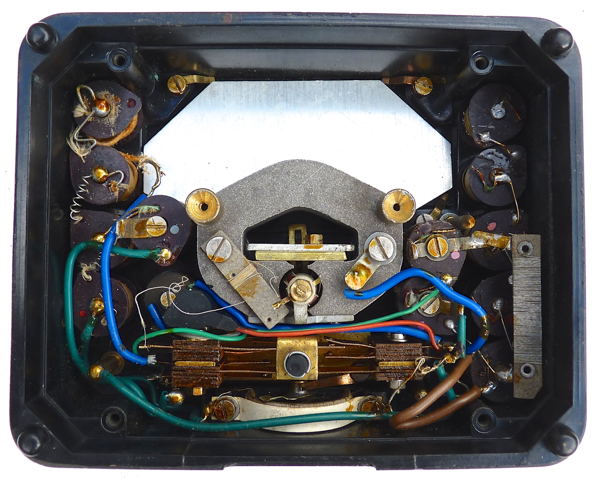
Inside view of 1935, 1946 and 1952 instruments, note the more modern rectifier and use of PVC insulated wiring
I purchased two of these little meters on Ebay in 2014, the first came complete with leads, instruction booklet dated 1942 and a well used box as illustrated below. It was scruffy but the movement worked and the meter appeared to give correct readings on the AC and DC voltage scales but the ohms range refused to function. I discovered that the resistor just to the left of the meter in the above image was open circuit in three places, due to corrosion caused by dampness reacting with the flux used for the soldered connection. I unwound the coil and soldered and paper insulated the joins I had to make and rewound it by hand. When tested with a couple of standard resistors it was found to be accurate at 100 and 1000 ohms but a little low at 2000 ohms. The second meter is externally identical except in one small respect, the scale plate is marked "Mod1" I wonder if this is because of the change in design to incorporate a different rectifier. I adjusted the magnetic shunt on the 1952 meter to improve the accuracy as it was reading about one division low at full scale. The engravings on the front panels were refilled with white "Snopake" correction fluid which was carefully applied allowed to dry an then rubbed off. The copper parts in the battery compartment and the hinges and screws for the back cover were cleaned using dilute hydrochloric acid (lavatory cleaner) before re-assembly.
This 1945 meter U76386-445 was given to me by Peter
Burgess the son in law of Kenneth
William Mobbs (1925-2017) who was a talented musician lecturer
and keyboard collector. He originally studied Physics at Clare
College and was ‘extracted’ from his course to work as a technical
assistant at TRE towards the end of WW2. He subsequently studied music
and became Senior lecturer at Bristol University but kept up his
interest things electronic. The meter which was housed in a purpose
made wooden box is interesting because the front panel moulding has
raised surrounds and the back panel indicates that it was a naval item
(AD PATT 13301) You may come across meters with the Air Ministry stores
reference 10s/10610.
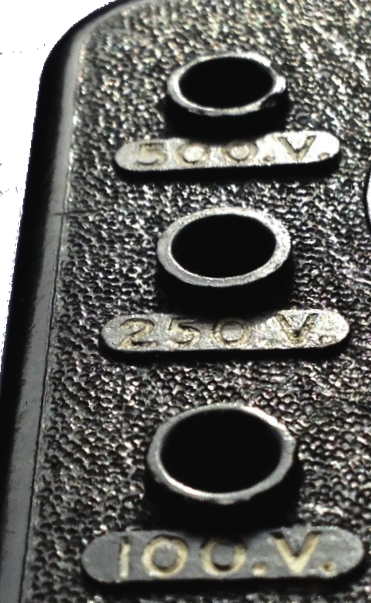
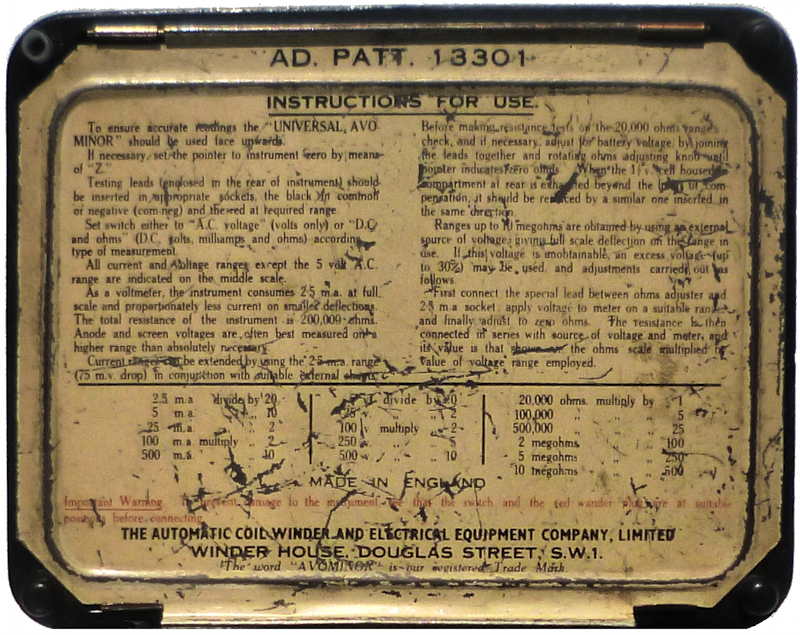
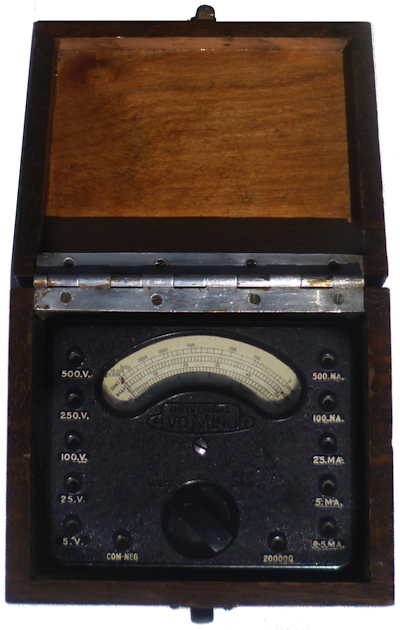
Close up view of top corner of front
panel, rear instruction plate and purpose made wooden box
I was given the earliest meter (U22080-95)
which formed part of
a collection of many instruments collected by Bob Evans by his
daughter Alice Kirby. Like the one below it was complete with original
battery. It would seem that this must have been one of the
first meters that Bob owned, as it came complete with a calibration and
test certificate dated 1948 from the department in which he first
started work.
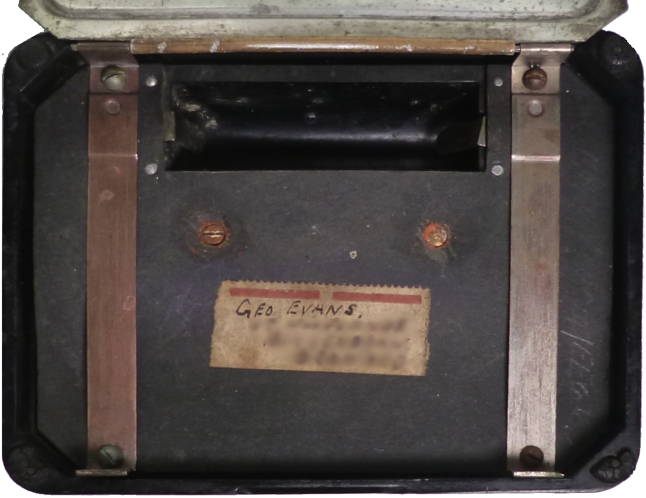
Bob Senneck donated another to add to my collection (U 89664-546). It belonged to his grandfather and was given to him by his father. He believes it was used by his grandfather when he worked on the amusement arcade on Skegness seafront. Although it worked on the ohms range and the lower voltage ranges I found that one of the multiplier resistors was open circuit. I found a 39kΩ resistor which when measured was sufficiently near 40kΩ to be connected between the 100V socket and the common Negative to enable the higher voltage ranges to read correctltly.
This meter (U87819-246) was given to
me by Adam Russell who
thought that it belonged to his great uncle who used to repair TVs. It
clearly had not been used for many years as was evident from the state
of the battery compartment yhough the cardboard box had kept it
relatively clean.
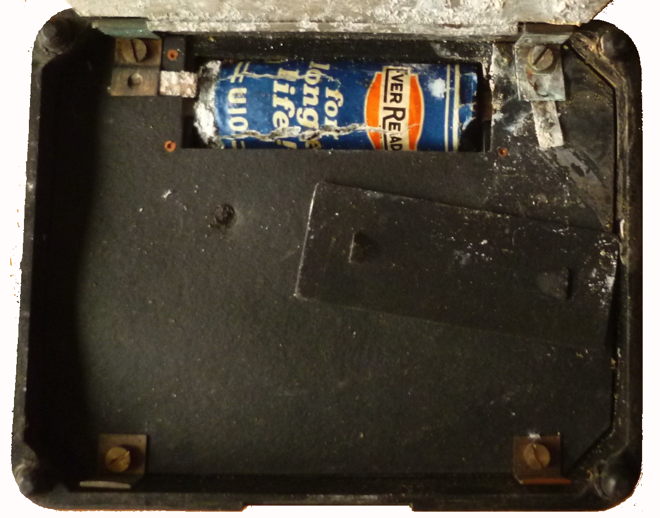
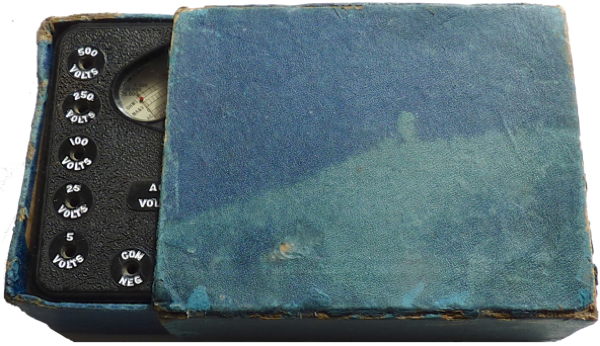
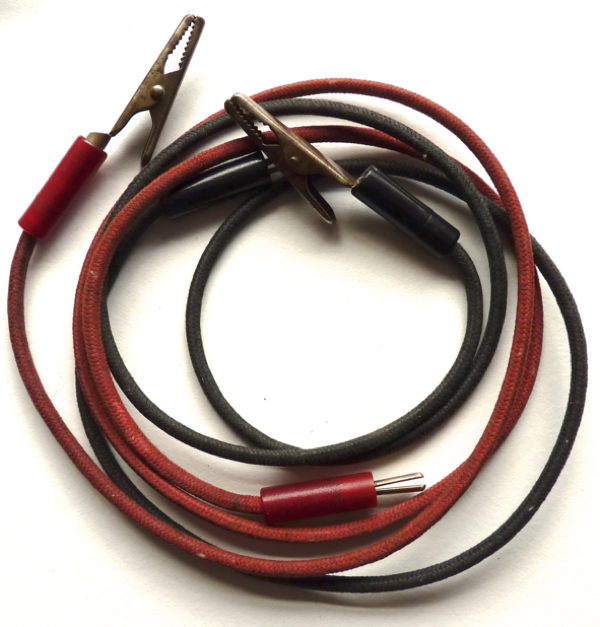
The leads are stored in the back of the instrument which is accessed by flipping back an aluminium cover which has the instructions printed on it.
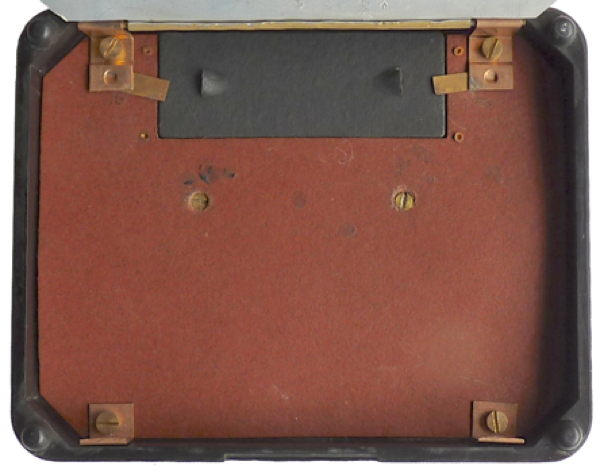
The battery compartment
was designed to take the now obsolete
EverReady U10 which is the same size as one of the cells in a 4.5 Volt
flat cycle lamp battery. I have used a AA cell with a metal spacer.
The 1952 and 1945 instruments which had no leads have a black interior
cover but
otherwise is very similar.

You will find a copy of avominor-instructions here (large pdf file)
Test leads The sockets are
1/8
inch which is just over 3mm. I have not found a supplier for suitable
leads and make my own. Most sets of leads you see on eBay or Amazon are
4mm. I guess you will have to look for 3mm banana plugs which are split
and can be tweaked to fit and change the plugs on your purchased leads.
What is it worth? There still many of these sturdy
instruments about so expect to pay �5 to �10 for a working instrument.
For further information have a look at my pages on similar
AVOmeters here

